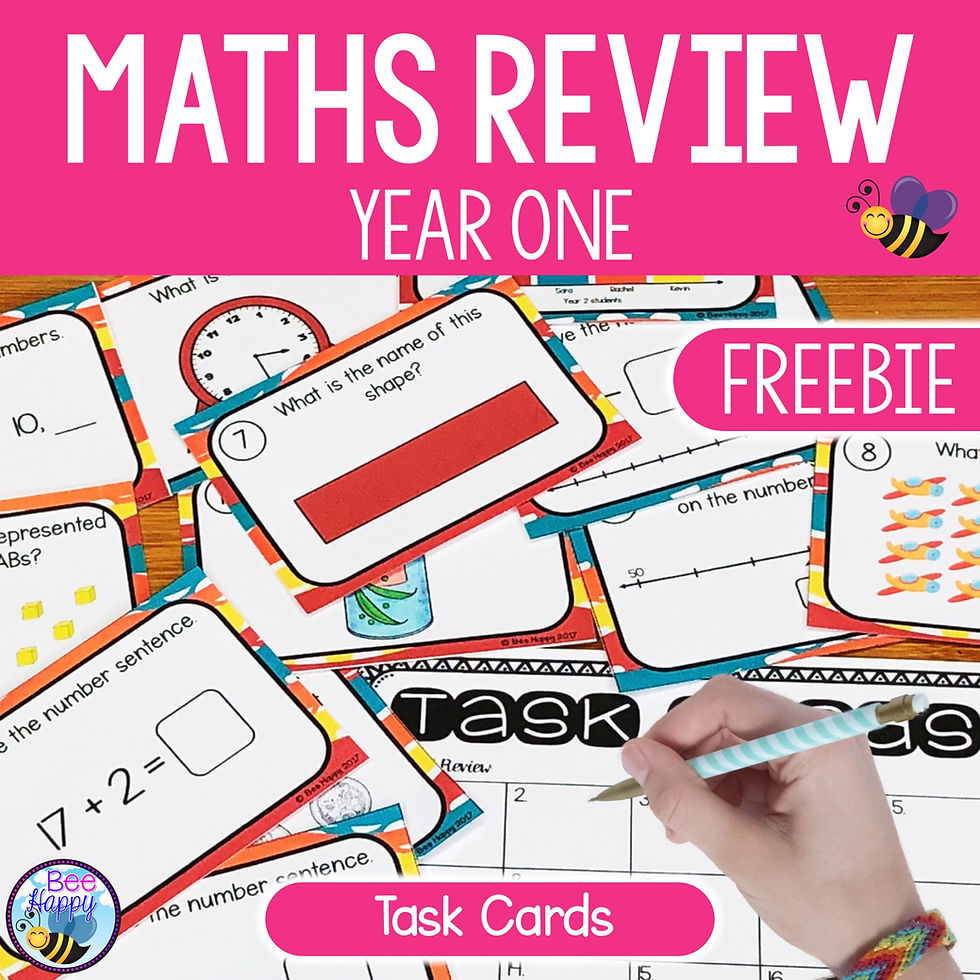5 Key Benefits of Using Task Cards in the Classroom
- Bee Happy Teaching

- Aug 12
- 2 min read
In a busy primary classroom, it can be a challenge to keep every child meaningfully engaged while meeting a wide range of needs. Task cards offer a simple, flexible tool that can be used across subjects to support active learning, differentiation, and student independence. They don’t require elaborate preparation or expensive resources, yet they can have a significant impact on how children learn and interact. Here are five key benefits of incorporating task cards into your teaching practice.

Promoting Active Learning
Young learners benefit from opportunities to move and interact during lessons. Task cards lend themselves well to activities that get students out of their seats—rotating through stations, working in different areas of the classroom, or even learning outside. The manageable size of each task encourages focus without overwhelming students, helping to maintain energy and attention throughout the lesson.
Easy Differentiation
Task cards make it straightforward to adapt learning for different ability levels. Sets can be created with varied complexity, allowing each student or group to work with material that is suitably challenging. This can be done discreetly, ensuring that all learners are supported without drawing attention to differences in ability.
Encouraging Collaboration and Communication
When used in pairs or small groups, task cards naturally prompt discussion and cooperative problem-solving. Students explain their thinking, listen to alternative approaches, and work together to reach a solution. This strengthens not only their subject knowledge but also their interpersonal and communication skills.

Building Independence
Because each card is self-contained, students can work through them at their own pace. This fosters independence and responsibility, as learners make decisions about how to approach each task and when to move on. For teachers, this independence creates space to provide targeted support to individuals or small groups.
Reaching Multiple Learning Styles
Task cards can be designed to suit a variety of learning preferences. They might include visual elements, short written prompts, practical activities, or oral discussion starters. This flexibility ensures that different learning styles are acknowledged and valued, supporting engagement for all students.
In Summary
Task cards are a versatile and effective addition to the primary classroom. They provide opportunities for movement, support differentiated instruction, encourage collaboration, build independence, and cater to diverse learning styles. Whether used in literacy, numeracy, science, or beyond, they offer a practical way to enrich learning experiences and help every child to engage and succeed.














Comments